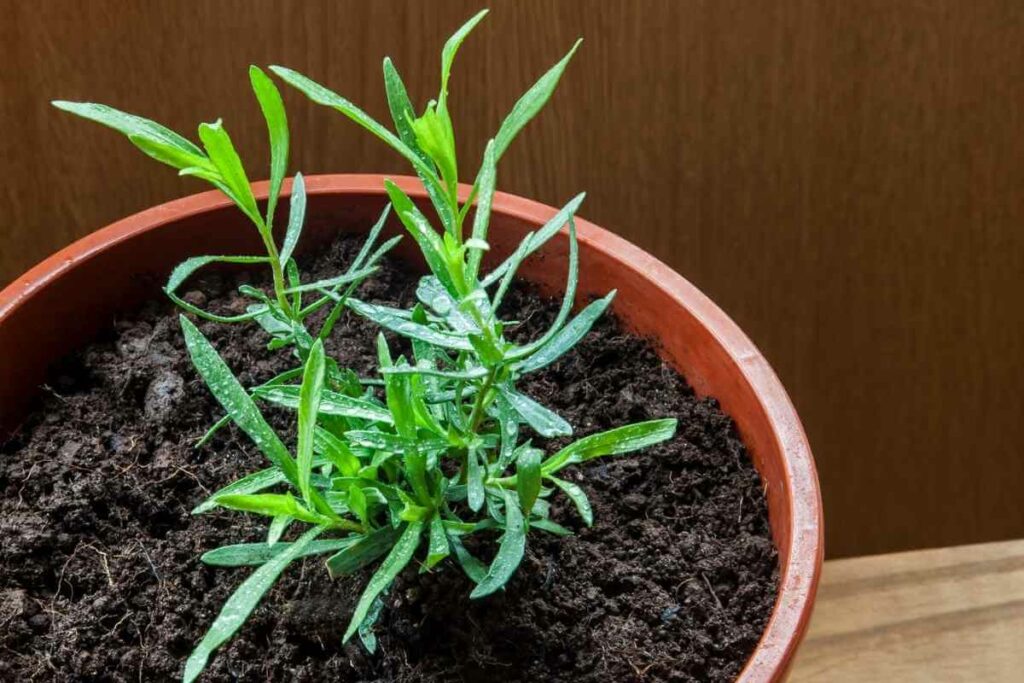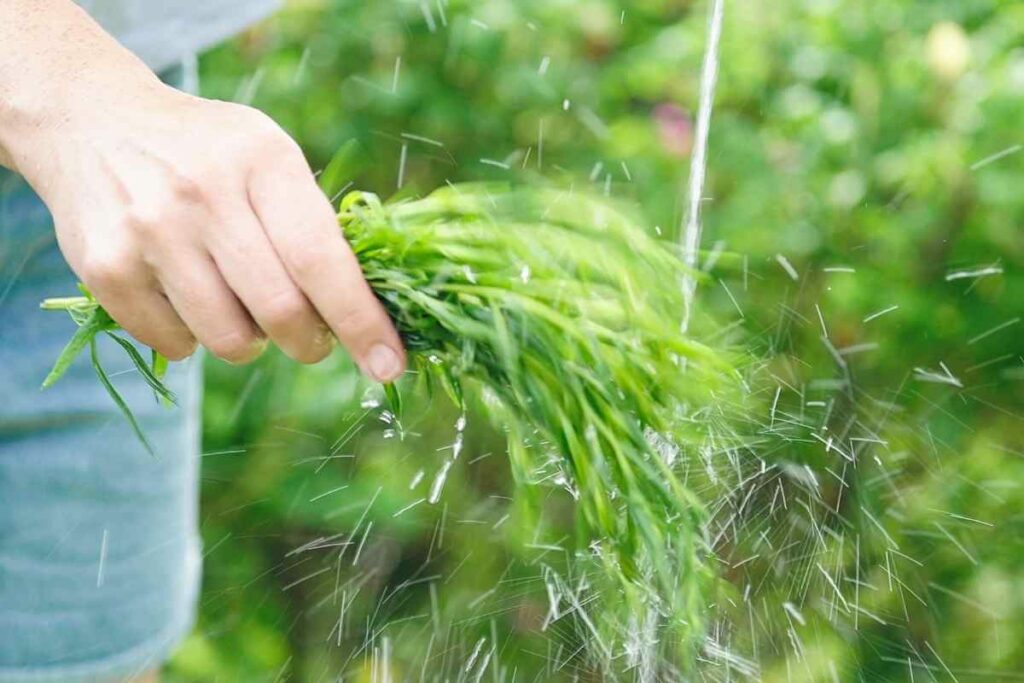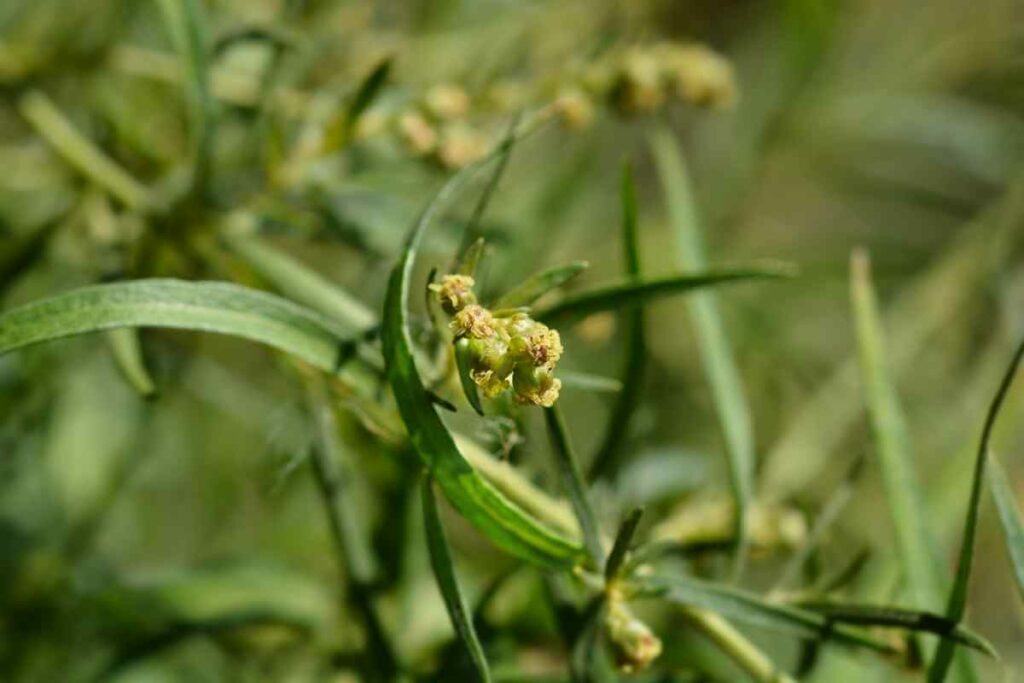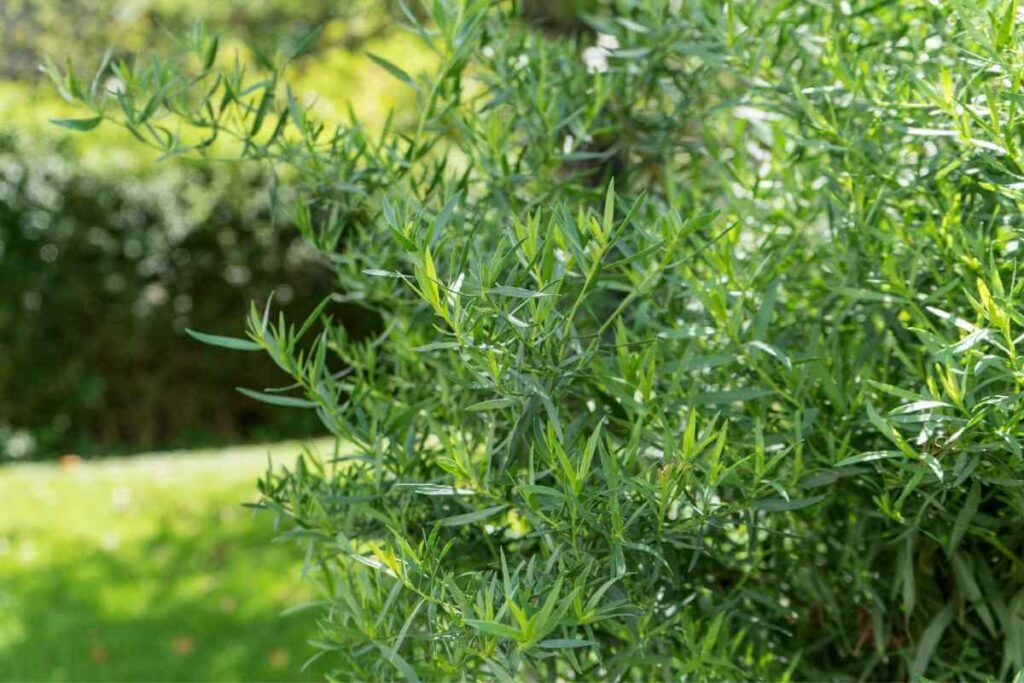Those who grow gardens regularly know that gardens don’t just happen. You must plan them out.
Garden plans are crafted based on the amount of sun in a spot, water tables, and the type of soil.
One thing many people don’t consider is “companion plants.” That would be a mistake.
Companion plants are plants that grow well next to each other. They may fight off different pests, help the other plant, or may so well with sharing sunlight or shade. The herb tarragon companion plants include herbs like parsley, rosemary, sage, and lemon thyme, among others.
Read further to find out why these plants work so well planted together and more you should know about planning out a companion garden using tarragon.
What Is Companion Plant Gardening?
Companion planting has always been a key factor in doing well with organic gardening.
The idea is planted each has qualities that can help other plants and provide mutual support.

For instance, some plants repel certain pests but don’t attract any helpful insects.
A companion plant that attracts helpful insects but can’t repel any would help both plants if planted next to the other won.
Some plants provide certain nutrients to the soil that help a plant next to it. It may grow taller to provide needed shade.
Herbs make great companion plants because:
- Many do repel pests and some even keep a wildlife like rabbits out of the garden because of their smell.
- Another benefit of companion planting is the combination can boost all nearby plants’ scent and taste.
Like some plants that do well together, some don’t thrive next to each other.
Vegetables and herb mixes are important to consider because some things an herb or vegetable can give produce from another plant a funky flavor if it is next to it.
Test It Out: This is particularly true of stronger plants like garlic, cayenne, and peppers.
What Is Tarragon?
Tarragon originated in the Meditteranean and is used in many European dishes include French sauces as well as Greek and Italian dishes.
It is a member of the sunflower family although it is green and doesn’t have the large blooms of a sunflower.
Tarragon is distinctive in its rich taste and can be overpowering if too much is used:
- French tarragon has a strong taste similar to licorice. The taste is a deep, rich one similar to that of fennel and anise. All three have the same organic compounds of estragole responsible for the unique flavors.
- The other type of tarragon, Russian tarragon, doesn’t have nearly as a distinct flavor or aroma but has other properties similar to the French version.
Both types would serve the same purpose in a garden and would have the same type of companion plants.
The French and Russian tarragon plants are both highly versatile in gardens and work well with a number of herbs, vegetables, and even fruits in a garden.

Tarragon does well in late spring and early summer and tends to die down as temperatures get hot during mid-summer.
It also grows well in a potted bowl or an indoor herb garden with or without other companion plants.
Why Is Tarragon Good as a Companion Plant?
Most gardeners say tarragon is an important element for a garden.
It works well with many herbs because it’s what gardeners call a “nursing plant.”
That means just having tarragon in your garden will improve the growth of nearby plants as well as give them a robust flavor.
Since tarragon is a perennial herb, most believe it’s best to plant them around other herbs that are also perennial.
Key Takeaway: This doesn’t necessarily do anything special in the garden but makes your garden easier to manage for the next year.
What Are Some Herbs to Plant With Tarragon?
Many herbs do well as tarragon companion plants since it helps other plants grow without harming them.
The first consideration would be Mediterranean herbs.
Since tarragon is a Mediterranean herb, it does with similar herbs.
All Mediterranean herbs need lots of sun and dry, free-draining soil so they do work well growing together.
Some Mediterranean herbs that grow well as companion plants to tarragon are:
Growing these herbs together as tarragon companion plants in a garden spot or a pot together creates a fantastic Mediterranean garden that can be easily plucked for Italian and Greek cooking.
Just make sure the planter or bowl you use for a grouped garden is large enough to avoid the plans competing for space and water.
MoisturenFan herbs are those who like a moist environment with lots of water and plenty of sunshine. Two of these, basil and parsley, also grow well with tarragon even though their needs are different.

Basil is particularly nice because it acts as a pest controller for the tarragon and other plants, repelling whiteflies, mosquitos, hornworms, and aphids.
Just be sure to water the moisture herbs more than the tarragon.
Lemon-scented herbs also do well next to tarragon.
This includes:
- Lemon thyme
- Lemon verbena
- Lemon basil
The lemon herbs are pretty strong in smell and flavor anyway but the tarragon will likely make both scent and flavor a deeper, stronger variation.
Other herbs that grow great next to tarragon are cilantro, catnip, and chive.
Can I Plant Tarragon Near Vegetables?
Certainly, tarragon works well with vegetables and even changes its flavor to a bolder tone.
Unlike other herbs, tarragon never adds a bad flavor to vegetables.
That makes it highly versatile.
The same rules apply to companion planting with vegetables as with companion planting with other herbs.
Plants that like the same type of soil, light, and water tend to work best as companion plants.

Like the Mediterranean companion herbs, tarragon does extremely well with Mediterranean vegetables.
One Mediterranean vegetable tarragon really likes is eggplant. Those two work well together.
Other Mediterranean vegetables that grow well with tarragon are:
- Zucchini
- Tomatoes
- Squash
- Carrots
- Broccoli
Mixing tarragon with another herb like chive and grouping them around tomatoes, carrots, and mustard greens will keep pests away from your vegetables.
Both herbs have different pest control qualities that protect these vegetables.
Another good combination is tarragon with dill. Dill brings in beneficial insects like honeybees and butterflies while it repels the bad insects like spider mites and cabbage loopers.
Adding tarragon enhances these pest control properties, so your whole garden is boosted by the additional protection.
The ultimate insect control is to plant tarragon companion plants catnip and dill. That will give you the best helpful insects while deterring pesky ones.
Can Tarragon Be a Companion Plant to Fruit?
Yes, tarragon makes a great companion plant to fruits because of its pest deterrent qualities.
Many farmers find planting in with strawberries adds in keeping unwanted pests away from the berries.
Conclusion
Tarragon is one of the most useful and versatile herbs for companion planting.
It is friendly to most herbs and vegetables and appears to amplify all other plants’ positive attributes.
It is also a good herb to use in the kitchen because it is just as versatile there.
Tarragon is a great companion to meat, seafood, and vegetables like beets, carrots, and summer squash.
It also enhances the flavor of French sauces, mustards, vinegar, and dressings.
